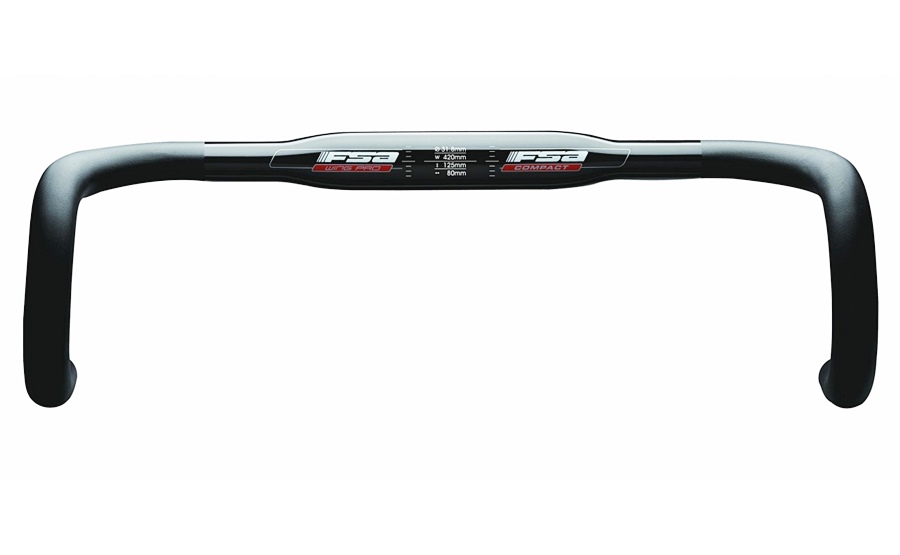


I felt like I was poking my elbows out to counteract it, a little like Chris Froome. It could simply be that I'm not used to this position, but having tried lots of different styles and shapes of handlebars, this didn't seem very ergonomic. While riding and moving from the hoods to the forward-sweeping flats, the amount of rotation in the hands is quite substantial, and after prolonged use I found it quite uncomfortable. That makes them quite long, and longer than most other similar handlebars if you are changing from a bar with shorter reach, this will have a small effect on handling. The Al Wing compact is an outstanding bar and if stiffness is your priority, the bar to ride and a lot cheaper.the weight diff isn't enough to matter.The reach measurement also changes for each of the three bar sizes – FSA lists it as 80mm, but measured from the centre of the stem it increases from 87.4mm for the 42cm bar, to 88.6mm and 89.8mm for the 44 and 46cm bars respectively. To me the Kwing is the best bar on the market. Sizing based upon shoulder width is a questionable convention. The bar is measured C to C at the hooks which flair slightly out from the hoods which are narrower across and where most spend their time. I run Campy derailleur cables behind the bar which works perfectly.Īs to sizing OP.if you ride a 42cm bar in conventional width, order a 44cm Kwing. The shape of the bar is excellent.Īs to internal is completely optional. I don't like a rigid handlebar and why I prefer the Kwing. I am 6 feet tall and relatively strong but the flex is nice for me. If you are a strong racer you may not like the flex of the Kwing. I prefer the latter.for both aesthetics, but most importantly flex and vibration damping.

I happend to have a bunch of exposure to a variety of bars on a wide range of bikes for a few months.Ĭlick to expand.I have owned both Al and now have the Kwing compact in carbon. With the alloy Wing Compact bars, you just slide the shifters off the bars. When a bar requires the cables to be internally routed, when or if you decide to change the bar, you get to undo the cables from their anchor bolts, which means you get to re-adjust shifting, etc. The alloy Wing Compact still has that flat "ergo" profile on the tops, and its easier to change cable routing from front to rear, and to change levers/bars. I'm not too hot on that idea, especially when I think of a rainy ride, sweat, etc. It does not flex like the carbon bar, perhaps the flex helps damp vibrationsĪlso the K-wing is kind of finicky when it comes to bar wrap and cable routing, being that the underside of the bar requires internal routing.Ī lot of riders like the tops of the K-wing to not have bar wrap, instead the wrap ends close to the hoods. It does not have that down and outward slant, its flat The alloy Wing Compact does not rise from the face plate clamping area, providing a place for things like a light. The utility is that it limits bar space for something like a light. The aesthetics may or may not be to your liking. The tops of the K-wing slant down and outwardĪnd of course they rise up ward from the faceplate The carbon bar will flex more than the alloy bar. Click to expand.I happend to have a bunch of exposure to a variety of bars on a wide range of bikes for a few months.


 0 kommentar(er)
0 kommentar(er)
